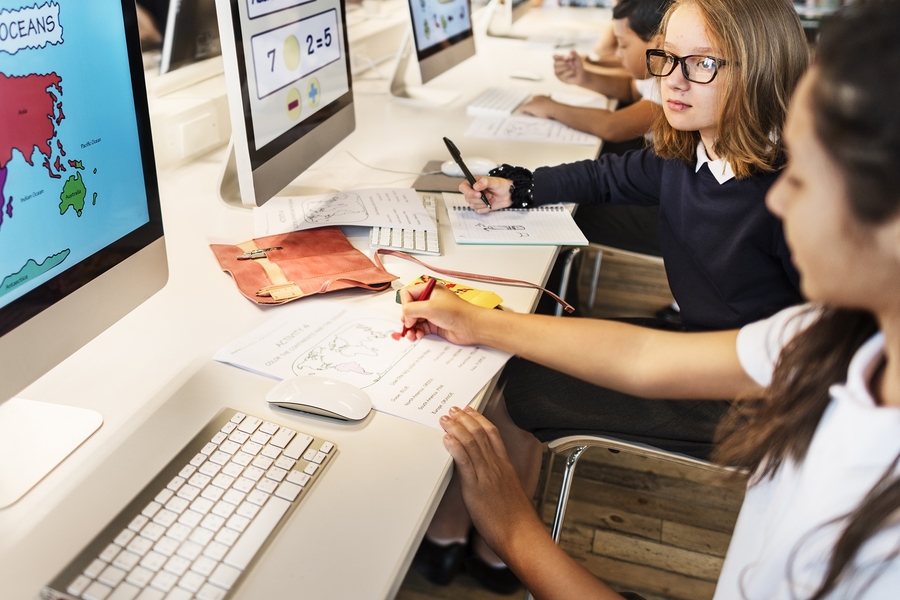Comprehensive Business Guides for Advancing Modern Technology Education And Learning in Schools and Colleges
The combination of innovation education and learning right into school and college educational program has actually come to be a crucial imperative in preparing students for a progressively electronic labor force. Comprehensive organization overviews play a critical function in this improvement by detailing the required frameworks for efficient program application, promoting necessary sector partnerships, and determining academic end results. As instructional organizations aim to align themselves with market needs, the opportunities and challenges offered by these overviews warrant a closer exam. Education. What details methods can be embraced to maximize their effect on both pupils and instructors?
Significance of Innovation Education And Learning
As modern technology remains to develop at an unprecedented pace, the significance of innovation education has actually become progressively noticeable in today's society. The combination of technology right into different facets of life requires that individuals have a fundamental understanding of technological principles and applications. This understanding not just boosts employability yet also fosters crucial reasoning and analytic skills essential for browsing a dynamic workforce.
In schools, modern technology education gears up trainees with the ability to adjust to quick modifications in sectors driven by innovation. It motivates creativity and empowers students to engage with emerging innovations, from fabricated intelligence to data analytics. Innovation education promotes digital literacy, which is vital in an era where info is conveniently offered yet frequently misleading.

Secret Elements of Effective Guides
Effective guides for modern technology education should incorporate numerous key parts to ensure that learners get one of the most from their experiences. Initially, a well-defined educational program is important, detailing the purposes, finding out outcomes, and the skills to be created. This curriculum ought to be regularly updated to reflect the rapidly developing technological landscape, ensuring significance and applicability.
2nd, thorough sources that consist of textbooks, on-line materials, and hands-on devices are important. These resources should be diverse and available, dealing with various learning styles and preferences. In addition, incorporating real-world situations and study can improve understanding and interaction.
Third, analysis methods must be included to evaluate student development successfully. These assessments ought to be varied, encompassing formative and cumulative assessments that align with the learning purposes.
Additionally, professional growth possibilities for teachers are important. Training workshops and programs can gear up instructors with the most up to date pedagogical methods and technical improvements.
Finally, fostering a collective learning atmosphere urges peer communication and understanding sharing. By including these vital components, guides for modern technology education and learning can significantly enhance the discovering experience, preparing pupils for future challenges in a progressively electronic globe.
Building Market Partnerships
Structure solid industry collaborations is an essential aspect of improving innovation education and learning. These collaborations between universities and services create a dynamic environment that profits students, educators, and employers alike. By cultivating partnerships with sector colleges, leaders and universities can align their educational programs with the advancing demands of the task market, making sure that students get appropriate abilities and knowledge.
The development of teaching fellowships, instructions, and mentorship programs offers as a cornerstone of these partnerships. Such opportunities provide students with hands-on experience, boosting their employability and functional understanding of innovation applications. Furthermore, market partners can supply understandings into arising fads and technical developments, enabling educators to adjust their mentor techniques accordingly.
In addition, collaborations can help with accessibility to sources, such as devices, software, and financing for research study try these out tasks. These contributions enrich the finding out environment and make it possible for organizations to stay at the forefront of technical advancement. Ultimately, constructing robust sector partnerships is vital for cultivating an experienced labor force that satisfies the demands these days's quickly transforming technological landscape, while also driving financial development and competitiveness in the broader community.
Implementing Modern Technology Programs
Carrying out technology programs within universities requires a Our site strategic technique that focuses on both educational program development and source allocation. To start effective innovation assimilation, institutions need to initially assess their existing facilities and recognize gaps in resources, consisting of equipment, software, and employees training. This analysis enables universities and colleges to produce a tailored strategy that straightens with their details educational objectives.
Next, it is important to create a comprehensive curriculum that integrates emerging modern technologies and sector criteria. Teaming up with instructors, sector professionals, and stakeholders can guarantee that the educational program remains relevant and effective in preparing students for the labor force (Make Money). Furthermore, expert growth for professors is critical, as it furnishes teachers with the skills essential to successfully show brand-new technologies
Moreover, establishments ought to emphasize the value of hands-on discovering experiences, such as laboratories and workshops, that enable students to use academic understanding in useful settings. This experiential approach boosts interaction and promotes crucial thinking. Safeguarding sustainable financing with partnerships and gives can help keep and broaden innovation programs, ensuring long-lasting success and adaptability in an ever-evolving technical landscape.
Determining Success and End Results
Evaluating the success and end results of innovation education and learning programs is essential for validating their effect and guiding future enhancements. Effective dimension structures should include both measurable and qualitative metrics, supplying a comprehensive sight of program efficacy. Secret efficiency indicators (KPIs) such as trainee enrollment figures, retention rates, and course completion percents supply beneficial quantitative information.

Incorporating standardized analyses can better examine students' technological competencies and preparedness for the workforce. Benchmarking versus similar establishments permits contextually pertinent comparisons, highlighting locations for growth.
Inevitably, the constant analysis of innovation education and learning programs fosters a culture of renovation, guaranteeing that they advance abreast with sector demands and academic standards. By methodically measuring success, organizations can other not just demonstrate responsibility to stakeholders however also improve their offerings, therefore enriching the discovering experience and preparing pupils for the ever-changing technological landscape.
Verdict

The integration of innovation education and learning right into college and college curricula has become a critical vital in preparing pupils for an increasingly digital workforce.As innovation continues to progress at an extraordinary rate, the importance of technology education has ended up being progressively evident in today's society.In academic establishments, modern technology education and learning equips trainees with the capability to adapt to rapid changes in industries driven by innovation. By focusing on modern technology education, institutions can cultivate a generation of educated people qualified of leveraging modern technology for individual and social advancement. The implementation of robust assessment strategies enables establishments to gauge success and end results, eventually improving the overall effectiveness of modern technology education and learning efforts and preparing pupils for future challenges.